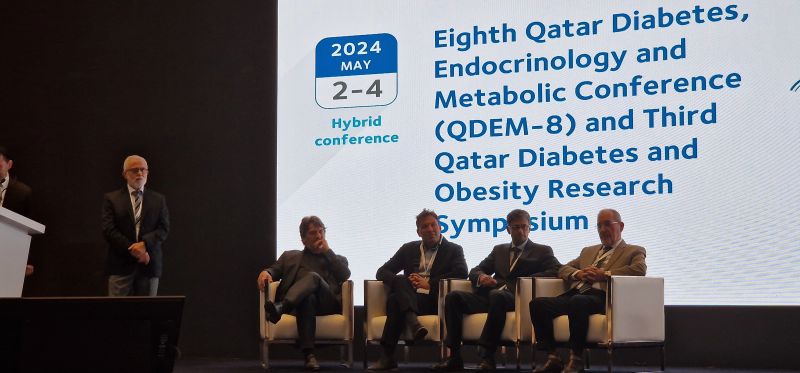Qatar hosts the 8th Diabetes, Endocrinology, and Metabolic Conference, bringing together over 1,500 healthcare professionals to address the country’s high rates of diabetes and obesity.
More than 1,500 healthcare experts attended the 8th Qatar Diabetes, Endocrinology and Metabolic Conference (QDEM-8) 2024, which was hosted earlier this week by Hamad Medical Corporation’s (HMC) Endocrine and Diabetes Division, Department of Medicine, and the Qatar Metabolic Institute (QMI).
Amid a high prevalence of diabetes among adult Qataris, QDEM-8 invited local and international experts in endocrinology, obesity, and diabetes to discuss the latest research, treatments, and technological advancements.
Panel discussions at the conference highlighted the impacts of both type 1 and type 2 diabetes, pituitary/adrenal and thyroid disorders, obesity, osteoporosis, pediatric endocrinology, and genetics.
Chair of the Conference’s Organizing Committee and Clinical Director of the National Diabetes Centre, Dr Mahmoud Ali Zirie, expressed that the conference hosting is an opportunity for local and international medical experts to share understandings.
“This year, our programme focused on a range of important and emerging areas, including type 1 and type 2 diabetes updates, genetics of diabetes in Qatar, obesity updates and the latest technologies available,” Zirie said.
“It’s more important than ever that healthcare professionals, both here and abroad, have access to the most up-to-date research and information about diabetes, endocrinology, and metabolic medicine,” he added.
According to previous studies, 46.1% of women and 35.9% of men above the age of 18 are classified as obese in Qatar.
This rate significantly exceeds regional averages, where the median stands at 10.3% for women and 7.5% for men.
Late last year, Tima Ben Brahim, a Doha-based licensed Sport and Clinical Dietician stressed the severe psychological toll that obesity in an interview with Doha News.
“Obesity can lead to low self-esteem and body image issues, depression, anxiety and even social isolation,” she said.
“Increased urbanisation, reliance on cars, the adoption of a more Westernised diet, and traditional hospitality and celebrations often involve large meals and high-calorie dishes,” Brahim added.
Healthcare institutions in Qatar have also ramped up their services to manage and prevent obesity.
In schools, physical education has been made a compulsory part of the curriculum to encourage active lifestyles among children.
Regulations on marketing unhealthy food to children have also been tightened.
Earlier this year, Al Emadi Hospital announced the initiation of a comprehensive weight loss and anti-obesity program running from January to April.
The program incorporated a wide range of specialized services tailored to assist individuals in cutting excess weight and adopting healthier lifestyle patterns.
In marking World Obesity Day, which falls on March 4th, Qatar hosted several activities titled “Let’s Talk About Obesity.” These activities aimed to expand on the discussion about obesity and highlight its complex and multifactorial nature.
Despite these efforts, the battle against obesity in Qatar is far from over.
By 2050, diabetes prevalence in Qatar is projected to double, while incidence is projected to increase by 80%, according to research from BMJ Journals.
While obesity is clearly the key driver of the diabetes epidemic among Qataris, this is observed in most of the expatriate population in the Gulf State.







